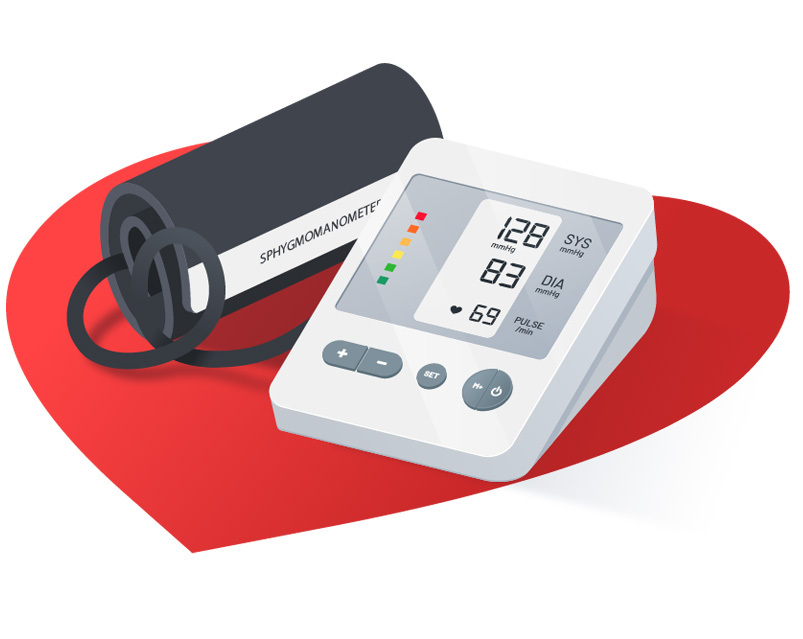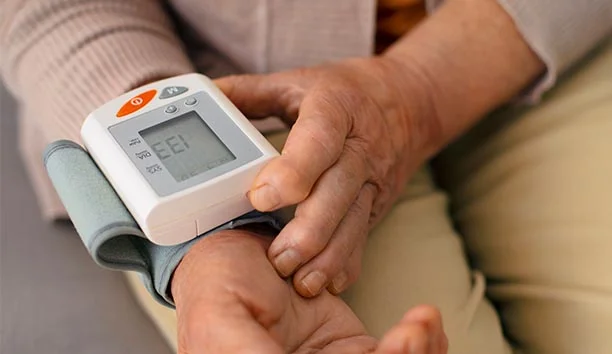Exploring the Role of the ABPM Examination in Diagnosing Hypertension Effectively
The Ambulatory Blood Pressure Monitoring (ABPM) test has emerged as a critical tool in the diagnosis of hypertension. By offering constant high blood pressure information over a 24-hour duration, it discloses patterns that traditional measurements frequently neglect. ABPM test in Bangalore. This complete strategy aids in identifying conditions such as white coat disorder and covered up high blood pressure. Nonetheless, recognizing the complete effects of ABPM in clinical practice elevates vital inquiries regarding its effect on individual care and therapy methods
Recognizing Hypertension and Its Risks
Hypertension, typically classified the "silent killer," impacts millions worldwide and poses substantial wellness risks. Identified by consistently raised blood pressure levels, this problem can result in severe difficulties if left unattended. The key threat elements consist of weight problems, sedentary way of life, excessive alcohol intake, and a diet high in salt. Individuals with high blood pressure are at a raised danger of creating cardiovascular conditions, stroke, and kidney damage, making very early discovery essential.Moreover, high blood pressure can advance without visible signs, which contributes to its credibility as a quiet threat. The lasting pressure on the heart and capillary can cause life-altering problems that might not be relatively easy to fix. Comprehending these dangers highlights the significance of keeping track of high blood pressure frequently and taking on way of living changes to mitigate prospective health and wellness issues. By raising recognition regarding hypertension and its risks, people can take proactive steps towards prevention and administration, inevitably securing their health.
What Is Ambulatory Blood Pressure Monitoring?

Ambulatory Blood Pressure Monitoring (ABPM) is a crucial device used to determine high blood pressure continuously over a 24-hour period while individuals take part in their normal everyday tasks. This approach involves making use of a mobile device that immediately takes high blood pressure readings at established periods, typically every 15 to half an hour throughout the day and much less frequently at night.ABPM supplies a comprehensive assessment of a client's blood stress patterns, capturing fluctuations that may happen throughout day-to-day regimens. It is especially beneficial for recognizing problems such as white layer hypertension, where patients exhibit elevated high blood pressure analyses in scientific settings but have regular degrees at home. Additionally, ABPM makes it possible for health care companies to examine the effectiveness of antihypertensive therapies with time. By using an extra nuanced sight of blood pressure dynamics, ABPM plays an essential role in the exact diagnosis and monitoring of hypertension.
Just How ABPM Differs From Typical Blood Pressure Measurement
While conventional high blood pressure measurement usually includes a solitary reading taken during a medical visit, ABPM uses a more exhaustive strategy by recording high blood pressure information over an extensive duration. This approach includes using a portable device that automatically measures high blood pressure at routine intervals, frequently over 1 day. Unlike the picture given by traditional methods, ABPM accounts for variations in high blood pressure throughout day-to-day activities and sleep patterns.Furthermore, ABPM can aid determine "white coat syndrome," where patients display raised analyses in clinical settings yet regular degrees in daily life. This extensive data collection enables a more precise analysis of a patient's blood pressure account. In addition, ABPM outcomes can help medical professionals make even more informed choices relating to diagnosis and therapy. On the other hand, typical measurements might forget crucial changes, possibly bring about misdiagnosis or unacceptable monitoring of hypertension.
The Advantages of Utilizing ABPM in Scientific Method
Offered the intricacies of diagnosing high blood pressure, using ABPM in scientific method provides countless advantages that improve individual treatment. ABPM enables for continuous blood stress monitoring over 24 hours, catching variations that solitary dimensions may miss. This considerable strategy assists differentiate in between real hypertension and white-coat syndrome, where people show elevated analyses in professional settings because of anxiety.Moreover, ABPM provides a more exact assessment by examining high blood pressure throughout day-to-day tasks and rest, offering insights right into nocturnal high blood pressure. This information is vital for tailoring therapy strategies, as it makes it possible for medical care companies to determine patterns and readjust drugs accordingly.Additionally, ABPM boosts patient interaction, as people can witness their blood pressure fluctuations in actual time. Inevitably, the combination of ABPM in scientific method results in improved analysis precision, much better management of hypertension, and a more customized technique to client treatment, thus cultivating general health results.
Translating ABPM Results: What Clients Need to Know
Translating ABPM results is essential for understanding specific high blood pressure patterns over a 24-hour period. People need to identify the relevance of precise measurements, as these readings can influence medical diagnosis and treatment strategies. ABPM test in Bangalore. Recognition of their certain blood stress trends can empower patients to engage better in their medical care
Recognizing Blood Pressure Patterns
Recognizing high blood pressure patterns is necessary for individuals going through Ambulatory Blood Stress Monitoring (ABPM), as it provides useful insights into their cardio health. ABPM catches high blood pressure analyses at normal intervals throughout the night and day, enabling an analysis of fluctuations and patterns. People may experience variants due to aspects such as task levels, tension, and rest. Identifying these patterns helps in comparing real hypertension and white coat disorder, where anxiousness throughout medical check outs brings about raised readings. Additionally, comprehending private blood pressure variants can aid medical care providers in tailoring treatment strategies a lot more successfully. Clients that grasp their one-of-a-kind high blood pressure dynamics can involve Clicking Here much more actively in discussions concerning their health and administration methods.
Importance of Accurate Measurements
Accurate measurements in Ambulatory High blood pressure Monitoring (ABPM) are necessary for analyzing outcomes successfully. These measurements offer a detailed evaluation of a patient's blood stress over a 24-hour duration, catching variations that might not be noticeable throughout common center visits. Correct cuff dimension, positioning, and adherence to checking methods are important to ensure reputable data. Inaccurate readings discover this info here can result in misdiagnosis, inappropriate therapy, and unneeded stress and anxiety for patients. Recognizing the relevance of these measurements encourages individuals to involve proactively in their medical care, promoting better adherence to therapy strategies. Inevitably, accurate ABPM outcomes assist in informed conversations between individuals and doctor, boosting the general monitoring of hypertension and enhancing health outcomes.
The Effect of ABPM on Hypertension Administration
As healthcare service providers increasingly focus on personalized person treatment, the role of Ambulatory High blood pressure Monitoring (ABPM) in high blood pressure administration has obtained considerable attention. ABPM enables constant high blood pressure assessment over 24-hour, offering a detailed view of an individual's blood pressure patterns. This approach assists in recognizing white-coat high blood pressure, where people experience raised readings in medical settings however keep regular levels at home. By capturing these variants, ABPM helps with a lot more exact diagnoses and tailored therapy plans.Additionally, ABPM improves drug adherence monitoring, as clinicians can adjust treatments based on real-world data. Patients are much more involved in their treatment, leading to improved results. The capability to review nighttime high blood pressure patterns also supplies understandings right into cardio threats that might go undetected with standard dimensions. ABPM not just improves the analysis procedure however additionally enhances administration strategies, inevitably adding to better high blood pressure control and client wellness.
Future Viewpoints on ABPM and Hypertension Medical Diagnosis
The future of ambulatory high blood pressure monitoring (ABPM) in identifying hypertension appears encouraging with innovations in monitoring modern technology. Improved data interpretation methods are anticipated to enhance accuracy and person results. Additionally, the expansion of medical applications may facilitate wider usage of ABPM in varied medical care setups.
Advancements in Monitoring Modern Technology

Enhanced Information Interpretation Methods
While standard methods of translating blood stress data have served their objective, the future of ABPM in hypertension diagnosis looks encouraging with the advancement of improved information interpretation methods. These innovations leverage innovative formulas and artificial intelligence strategies to evaluate ABPM information a lot more properly. By recognizing patterns and fads that may not be visible via standard evaluation, medical professionals can obtain much deeper insights into a person's blood pressure variability and general cardiovascular danger. Furthermore, these techniques can assist in identifying real high blood pressure from white-coat syndrome, therefore facilitating much more exact therapy strategies. As data interpretation remains to progress, it is poised to considerably boost the diagnostic precision and performance of ABPM in handling high blood More hints pressure and its associated issues.
Increasing Professional Applications
As advancements in technology and study proceed to unfold, the clinical applications of Ambulatory High blood pressure Monitoring (ABPM) are readied to expand significantly in the diagnosis and monitoring of hypertension. Future perspectives indicate that ABPM will certainly play an essential duty in recognizing covered up high blood pressure, a condition usually forgot in conventional analyses. In addition, integrating ABPM with telemedicine platforms might enhance client monitoring and adherence to therapy protocols. Research study right into individualized medication might additionally fine-tune using ABPM, permitting tailored therapeutic techniques based upon specific high blood pressure patterns. Furthermore, the capacity for ABPM to examine cardiovascular risk past hypertension might revolutionize precautionary care, eventually resulting in enhanced patient end results and even more efficient healthcare source allotment.

Regularly Asked Questions
Just how Long Does an ABPM Examination Typically Last?
The ABPM test generally lasts 24-hour. Throughout this period, it gauges blood pressure at normal periods, offering an extensive review of a patient's high blood pressure patterns throughout day-to-day activities and nighttime rest.
Exist Any Type Of Adverse Effects of Wearing the ABPM Tool?
The side impacts of using an ABPM device may include mild pain from the cuff, skin irritation, and periodic anxiousness because of the tool's frequent dimensions. Usually, these effects are temporary and deal with after removal.
Can I Proceed My Normal Activities During the ABPM Test?
During the ABPM test, individuals can normally proceed their normal tasks. However, they are encouraged to avoid severe physical exertion and water tasks to ensure precise readings and avoid damages to the device.
Just How Frequently Should ABPM Be Duplicated for Monitoring?
The frequency of duplicating ABPM for keeping an eye on typically depends upon private wellness problems. Normally, it is advised every 6 months to one year, permitting healthcare companies to evaluate changes in blood stress accurately gradually.
Does Insurance Normally Cover the Expense of ABPM Testing?
Insurance policy protection for ABPM screening differs significantly among service providers and strategies. Many insurers cover it when deemed medically needed, while others might call for previous authorization or may not cover it in any way, resulting in potential out-of-pocket expenses.